
New reading of the Mesha Stele inscription has major consequences for
He was speaking about the Mesha Stele (also known as the Moabite Stone). This 3-foot-tall basalt stone holds 34 lines of Phoenician script, or paleo-Hebrew, recording the victories of the Moabite King Mesha. Here are a few excerpts from the text: I am Mesha, son of Chemosh (-yatti), king of Moab, the Dibonite
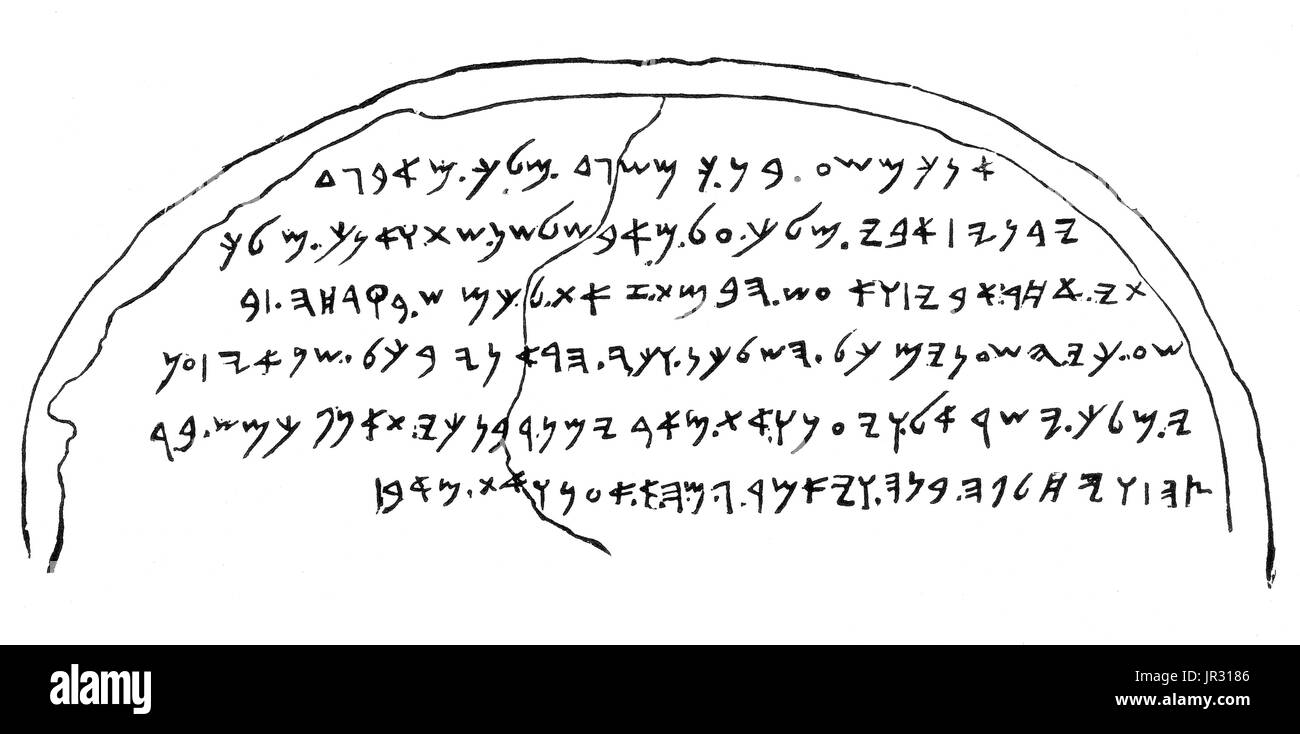
Epigrafia semitica immagini e fotografie stock ad alta risoluzione Alamy
The Mesha Stele, also known as the Moabite Stone, is a stele dated around 840 BCE containing a significant Canaanite inscription in the name of King Mesha of Moab (a kingdom located in modern Jordan ).

8 Archaeological Discoveries That Support The Bible
Mesha dedicated the stele to his deity Chemosh out of gratitude for the latter's deliverance of the Moabites from Israelite rule, and for his help in the conquest of the plain. The stele (lines 4-9) relates, "As for Omri, king of Israel, he humbled Moab many years [lit. days], for Chemosh was angry with his land.
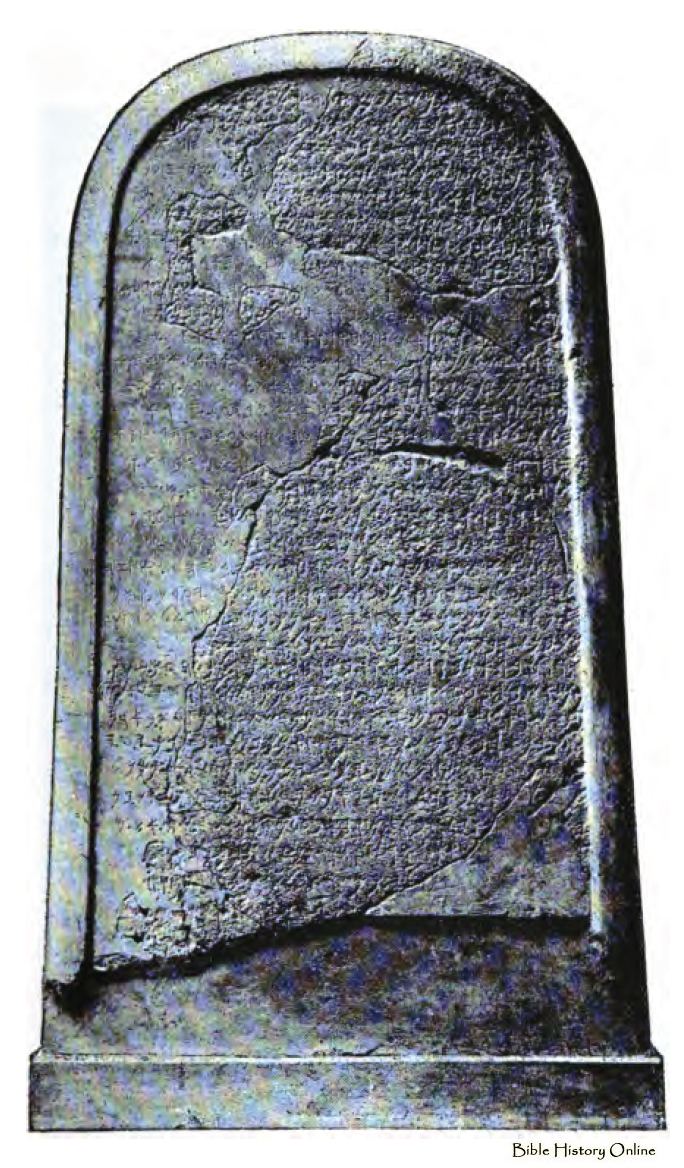
Mesha Stele Alchetron, The Free Social Encyclopedia
The Mesha Stele details the victories of King Mesha of Moab over the kingdoms of Israel and Judah. It was found at Dibon, the capital of Moab, and dated to the ninth century BCE. The stone contains 34 lines of text, which have been translated into English. [1] The italicized portions of the text, though likely, are not certain.

The Israel Stele of Merneptah. c. 1210 BC, currently located in the
One of the most exceptional biblical archaeology artifacts ever found, the three-foot-tall Mesha Stele contains a 34-line inscription celebrating the Moabite vassal king Mesha 's rebellion against the Israelites. Renowned epigrapher André Lemaire identified in line 31 of the ninth-century B.C.E. stele the phrase בת [ד]וד ( bt [d]wd.

THROUGH THE LAND OF ISRAEL III July 2012
The Moabite Stone, otherwise known as the Mesha Stele, contains an ancient inscription by Mesha, King of Moab during the late 9th century BCE, elements of which match events in the Hebrew Bible. The inscription describes two aspects of how Mesha lead Moab into victory against ancient Israel.
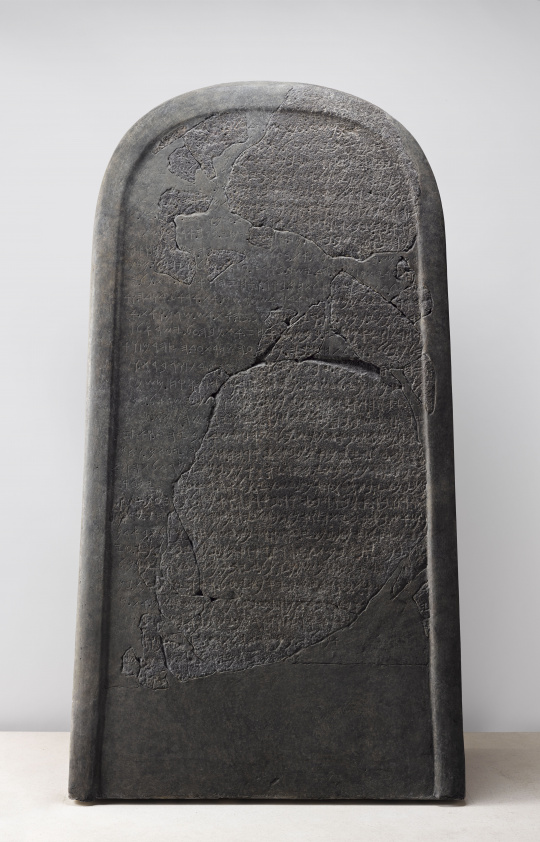
Stèle de Mesha, roi de Moab Images d’Art
La stèle de Mesha est une stèle de basalte découverte en 1868 et sur laquelle est gravée une inscription remontant à l'époque du roi moabite Mesha (IX e siècle av. J.-C.).Le texte de trente-quatre lignes (l'inscription la plus longue découverte jusqu'à présent pour cette époque de l'ancien Israël), est écrit en moabite.Datée de 850 av. J.-C. environ, elle relate les victoires de.
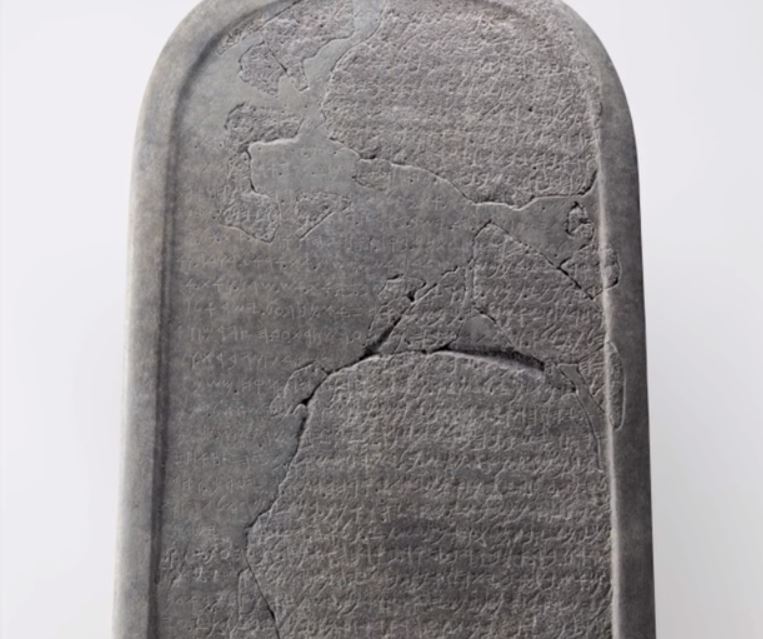
Expo Mesha, la stèle brisée puis raconte l'Histoire The
The Mesha Stele and King David of the Bible Does the ninth-century Mesha Stele mention King David of the Bible? In the ninth century BCE, King Mesha of Moab set up a stela in his capital Dibon. It chronicled his military victories over his enemies, including Israel and possibly Judah, called the "House of David."
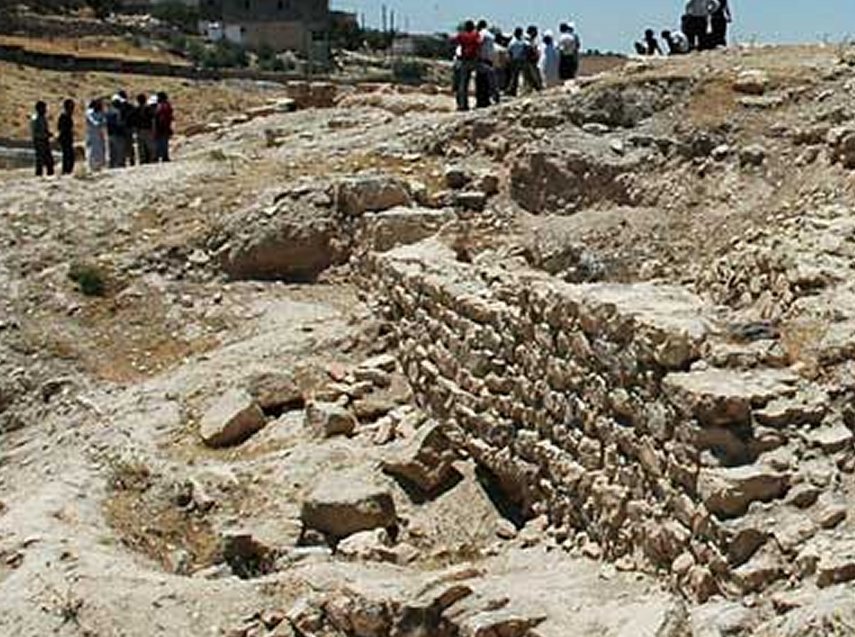
Mesha Stele One Of The Most Valuable Biblical Artifacts Ancient Pages
La stele di Mesha (nota nel XIX secolo come pietra moabita) è una pietra in basalto nero, situata in Giordania, che riporta un'iscrizione effettuata nel IX secolo a.C. da re Mesha dei Moabiti .
The Tel Dan Stele a fragmented stele discovered in Israel in 1992
The Mesha Stele,also known as the Moabite Stone,is a black basaltmonument bearing an inscription by the ninth century B.C.E.MoabiteKing Mesha. Discovered in 1868 at Dhiban, Jordan(biblical "Dibon," the capital of Moab), the inscription of 34 lines is the most extensive document ever recovered referring contemporaneously to ancient Israel.
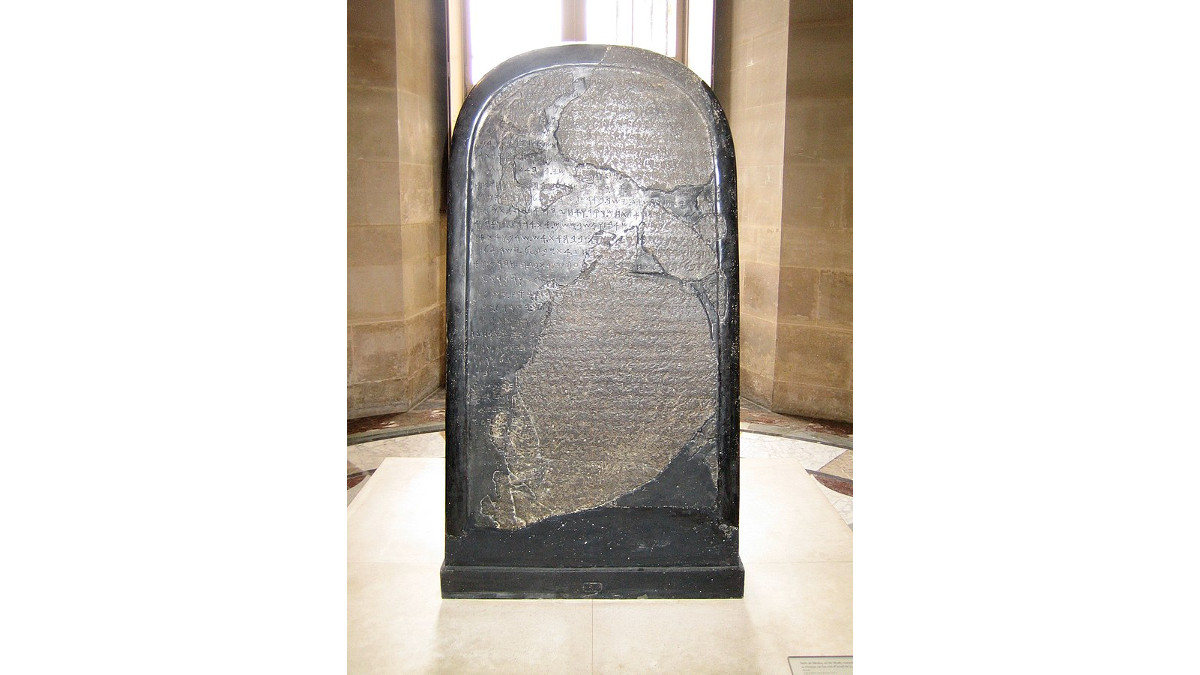
Recenti studi sulla stele di Mesha evidenziano riferimenti a Re David
(2 Kings 3:4-27). The king's name: "Mesha" is based on the Hebrew word "to save", but it has also been suggested that his name may be related to the Hebrew "Moshe" (Moses). While his personality is rather obscure, he left a clear message on to the stone, which gives us a glimpse of historical events, which were important for the Moabite Kingdom.
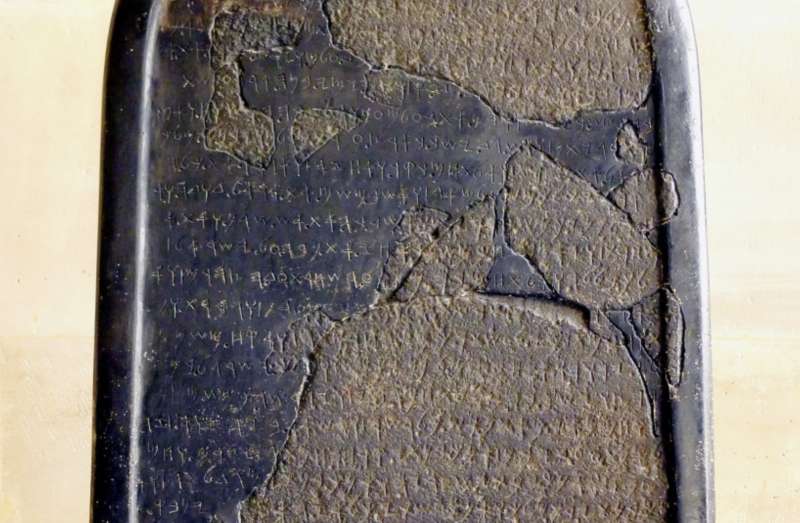
Stele di mesha3 Dago fotogallery
MESHA STELEMESHA STELE , an inscribed basalt stele, measuring about 40 inches (one meter) high and about 28 inches (70 centimeters) wide, erected by *Mesha, king of Moab, at Dibon (today, Dhībân), probably in the third quarter of the ninth century, b.c.e. The shape of the stele, with a flat base and rounded top, is characteristic of those erected by kings of that period.

Luca. La stele di Mesha Studium Biblicum Franciscanum
The Moabite Stone, also known as the Mesha Stone, contains an ancient inscription of Mesha, the king of Moab dating back to the late ninth century B.C., whose elements correspond to the events narrated in the Hebrew Bible.

The Mesha Stele
R Replicas of Mesha Stele (4 F) Media in category "Mesha Stele" The following 29 files are in this category, out of 29 total. A history of all nations from the earliest times; being a universal historical library (1905) (14782185595).jpg 1,512 × 2,442; 721 KB Brockhaus and Efron Jewish Encyclopedia e11 477-0.jpg 1,082 × 1,655; 527 KB

מצבת מישע המואבית, בה מסופר על כיבוש מואב על ידי עומרי ואחאב מלכי ישראל
The Mesha Stele One of the most important early discoveries in Biblical Archaeology was of the "Mesha Stele" in what is now modern-day Jordan. This massive stone monument from the 9th century BC was inscribed in an ancient language called Moabite, very similar to Hebrew, and it tells the story of 2 Kings 3 from the perspective of King Mesha of Moab, an enemy of Israel and Judah.

La Stèle de MESHA (Moabite Stone) et la BIBLE AgoraVox le média citoyen
The Mesha Stele details the victories of King Mesha of Moab over the kingdoms of Israel and Judah. It was found at Dibon, Moab's capital, and dated to the ninth century B.C.E. The stone contains a possible reference to the "House of David" as Judah's rulers, which seems to support King David as a historical figure. Thanks to recent photographic evidence, our authors argue that this.